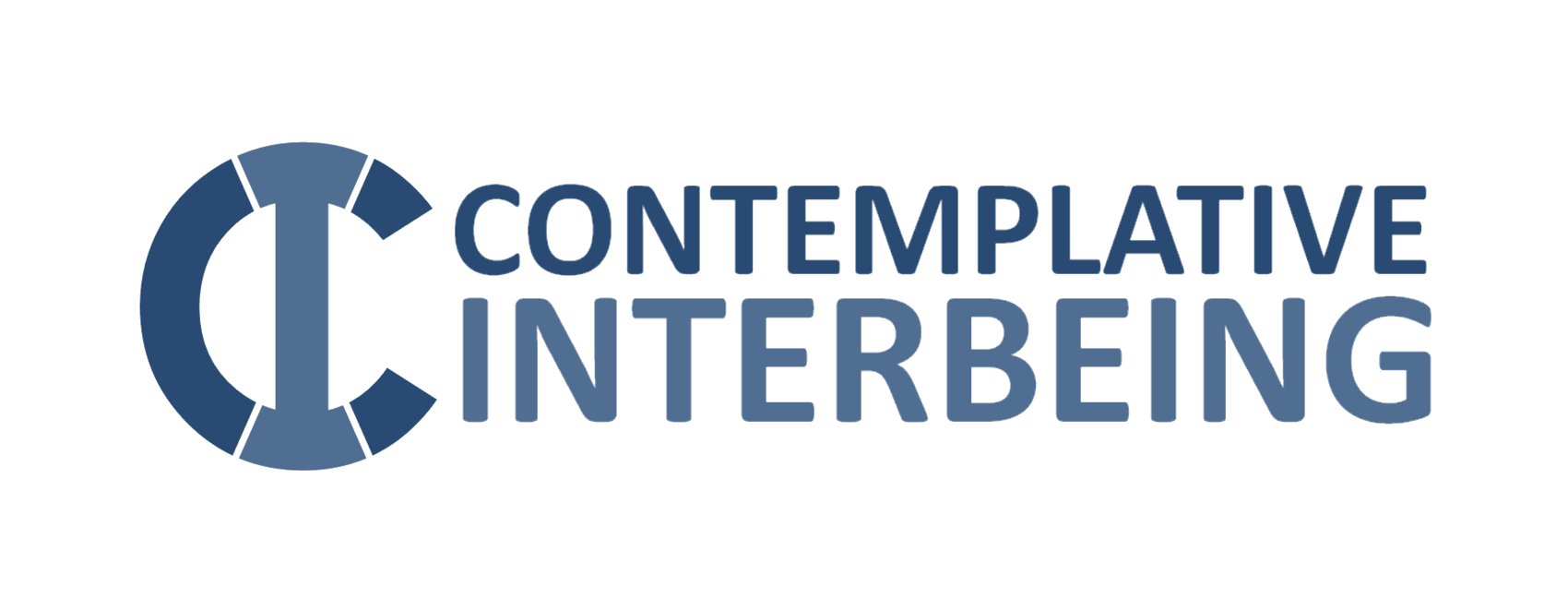 Contemplative Interbeing offers workshops and retreats to fits your group’s specific needs. For those willing to learn the practice of Christian meditation, Centering Prayer, please contact us to schedule a workshop or retreat. At the bottom of this page are four videos to help introduce meditation and contemplation. You can read more about the brains role in meditation and contemplation by clicking here.
Contemplative Interbeing offers workshops and retreats to fits your group’s specific needs. For those willing to learn the practice of Christian meditation, Centering Prayer, please contact us to schedule a workshop or retreat. At the bottom of this page are four videos to help introduce meditation and contemplation. You can read more about the brains role in meditation and contemplation by clicking here.
Centering Prayer Retreats
Weekend Retreats
Weekend Retreat offer instruction on the method of Centering Prayer and discussion about its conceptual background. A weekend of silence refreshes the spirit and deepens the commitment to a regular Centering Prayer and Lectio Divina practice.
Intensive Retreats
In seven- or ten-day formats, Intensive Retreats provide in-depth exposure to the contemplative dimension of the Gospel through increased periods of Centering Prayer and the viewing of a video lecture series on the contemplative dimension of the spiritual journey. Prior Centering Prayer retreat experience required.
Post-intensive Retreats
Post-Intensive Retreats emphasize increased silence and increased periods of Centering Prayer and Lectio Divina. Prior Centering Prayer retreat experience required.
Advanced Retreats
Advanced Retreats provide an opportunity to deepen the practice of Centering Prayer in an atmosphere of silence and community support. Advanced retreats usually feature Part IV of the Spiritual Journey videotape series by Fr. Thomas Keating. Prior Centering Prayer retreat experience required.
21-day Immersion Retreats
A 21-day Immersion Retreat is a unique opportunity for those already established in Centering Prayer to deepen the experience of living the commitment to the contemplative dimension of the Gospel in daily life. Each week of these retreats has a new presenter and theme. Prior Centering Prayer retreat experience required.
 Centering Prayer Workshops
Centering Prayer Workshops
Introduction to Centering Prayer Workshop
The Introduction to Centering Prayer Workshop is a presentation of the discipline of Centering Prayer as silent communion with God beyond concepts, words and images. The workshop includes instruction on the method of Centering Prayer in a one-day, six-hour workshop, plus six to twelve weekly sessions following the workshop. No previous experience is required.
Centering Prayer
Centering Prayer is a method of silent prayer that prepares us to receive the gift of contemplative prayer, prayer in which we experience God’s presence within us, closer than breathing, closer than thinking, closer than consciousness itself. This method of prayer is both a relationship with God and a discipline to foster that relationship.
Centering Prayer is not meant to replace other kinds of prayer. Rather, it adds depth of meaning to all prayer and facilitates the movement from more active modes of prayer — verbal, mental or affective prayer — into a receptive prayer of resting in God. Centering Prayer emphasizes prayer as a personal relationship with God and as a movement beyond conversation with Christ to communion with Him.
The source of Centering Prayer, as in all methods leading to contemplative prayer, is the Indwelling Trinity: Father, Son, and Holy Spirit. The focus of Centering Prayer is the deepening of our relationship with the living Christ. The effects of Centering Prayer are ecclesial, as the prayer tends to build communities of faith and bond the members together in mutual friendship and love.
CENTERING PRAYER: THE VERY BASICS
Most faith traditions have some form of meditation or contemplation. Virtually all methods of meditation have a goal of expanding, or deepening, the consciousness of the practitioner. The details vary. The Contemplative Society focuses on Centering Prayer, a surrender method of meditation, or contemplative prayer, that reaches back to the early days of Christianity.
In her book Centering Prayer and Inner Awakening*, Cynthia Bourgeault writes that even though we can perhaps find ways to stop “outer noise” it is much more difficult to still the “inner noise”(p.5). She says Centering Prayer “….is a very simple method for reconnecting us with that natural aptitude for the inner life…(p.6) which, over time, of its own accord, leads to personal self-emptying and a more unitive outer life.
 HOW TO “DO” CENTERING PRAYER:
HOW TO “DO” CENTERING PRAYER:
• Find a quiet space where you are unlikely to be disturbed.
• Sit in a way that allows you to be relaxed in body and alert in mind. Use a chair, meditation cushion or prayer rug, according to your own physical needs and preferences.
• Gently close your eyes.
• “Allow your heart to open toward that invisible but always present Origin of all that exists ” (p. 6)
• Whenever you become aware of a thought, no matter what its nature, let it go.
• Use a “sacred word”.
This is a word or short phrase that helps you to let go of thoughts. It is a reminder of your intention to remain open to the silence. Generally sacred words fall into one of 2 categories: “God” words/phrases such as “Abba”, “Jesu, “Mary”, “Reality”, “Come Lord” or “state” words/phrases such as “love”, “peace”, “be still”. Sacred words are not used as mantras, as in constantly repeating them, but as a reminder of your intention to remain open.
• Continue this practice for 20 minutes. At the end of the time get up and go about your business, leaving the practice behind, in the same way you let go of your thoughts.
• People who are just beginning, and are particularly restless in mind and body, may find it easier to start off with shorter prayer periods, perhaps only 5 minutes per sit to start. Then after a few days extend the time to 10 minutes and so on until you are able to sit for 20 minutes. Give the practice at least 2 weeks before you decide if it is right for you.
• Two 20-30 minute sits per day are considered ideal. It is strongly recommended that no one meditates for more the 60 minutes a day unless you are attending a structured retreat with experienced leaders.
SOME FURTHER THOUGHTS ON CENTERING PRAYER
Your sacred word: Some people try out a few sacred words until they settle on one that feels right. Once you start a sit using a particular word, continue using it during that sit. As much as possible let your word or phrase find you. In other words, don’t try to control this process.
Timing sits: Set a vibrating or very quiet timer of some sort to tell you when your sit is over without startling you. For those with smart phones there are some good apps available (eg. Contemplative Outreach’s Centering Prayer app).
Starting the sit: Make sure you as comfortable as possible; sitting upright is best but if your particular physical needs demand do what you need to do to be comfortable. Close your eyes. Some practitioners like to preface their Centering Prayer session with a very short invocation, chant or prayer that reminds them of their intention to be fully open and present to the Divine. Some like to take 2-3 deep breaths. Keep in mind that Centering Prayer is never about deliberately trying to change or control your body or mind.
Physical sensations during a sit: As much as possible treat physical sensations in the same way as you do thoughts; let them go by simply and gently returning to your sacred word. If a sensation becomes unbearable gently allow yourself to return to outer awareness, make necessary adjustments, and return to your sit.
Thoughts during your sit: It is common to have thoughts of various kinds during a sit. They might involve your plans for the day, or give you some psychological insight into your behaviour, or be about the nature of the Divine; you may find yourself with pleasant thoughts, or angry feelings, or notice yourself trying to create a particular mood in your practice. You may even be aware of being ‘blissed out’. No matter the type or nature of thoughts and feelings the response is the same: gently return to your sacred word, which is the symbol of your “intention to consent to the presence and action of God within” (p. 24), and then let go. Do not analyze, label or judge your thoughts and feelings. Simply, gently, let them go. Over and over and over and…….
To end a sit: Many like to end a sit by bowing in place, thus stretching out their backs. Some may say a very short prayer of thanks. It is then time to return to your daily routine without dwelling on the experience of your sit.
“Prayer is not a request for God’s favors…Genuine prayer is based on recognizing the Origin of all that exists, and opening ourselves to it.”
~Cynthia Bourgeault

